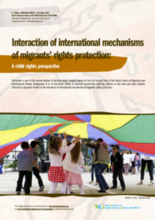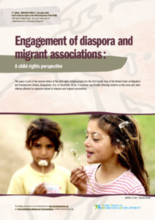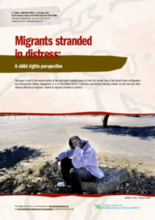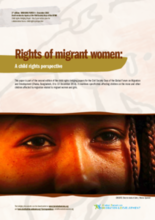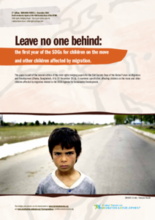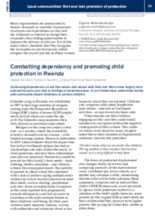Displaying 341 - 350 of 526
This "Atlas" investigates the situation of unaccompanied foreign minors, to have a deeper understanding of the identity, the origin and the life stories of these particularly vulnerable children.
This video from The Guardian discusses how six weeks after the Calais migrant camp was demolished, unaccompanied minors were transferred around France and are still waiting to hear from the Home Office.
This paper is the fifth of the second edition of the child rights bridging papers for the Civil Society Days of the Global Forum on Migration and Development (Dhaka, Bangladesh, 8 to 10 December 2016).
This paper is the second of the second edition of the child rights bridging papers for the Civil Society Days of the Global Forum on Migration and Development (Dhaka, Bangladesh, 8 to 10 December 2016).
This paper is the sixth of the second edition of the child rights bridging papers for the Civil Society Days of the Global Forum on Migration and Development (Dhaka, Bangladesh, 8 to 10 December 2016).
This paper is the third of the second edition of the child rights bridging papers for the Civil Society Days of the Global Forum on Migration and Development (Dhaka, Bangladesh, 8 to 10 December 2016).
These series of 6 papers are the second edition of the child rights bridging papers for the Civil Society Days of the Global Forum on Migration and Development (Dhaka, Bangladesh, 8 to 10 December 2016).
This paper is the fourth of the second edition of the child rights bridging papers for the Civil Society Days of the Global Forum on Migration and Development (Dhaka, Bangladesh, 8 to 10 December 2016). It examines specificities affecting children on the nove and other children affected by migration related to migrants stranded in distress.
This paper is the first of the second edition of the child rights bridging papers for the Civil Society Days of the Global Forum on Migration and Development (Dhaka, Bangladesh, 8 to 10 December 2016).
According to this article from Forced Migration Review, when the majority of aid comes from external sources, it can cause those who receive the aid to feel powerless.

